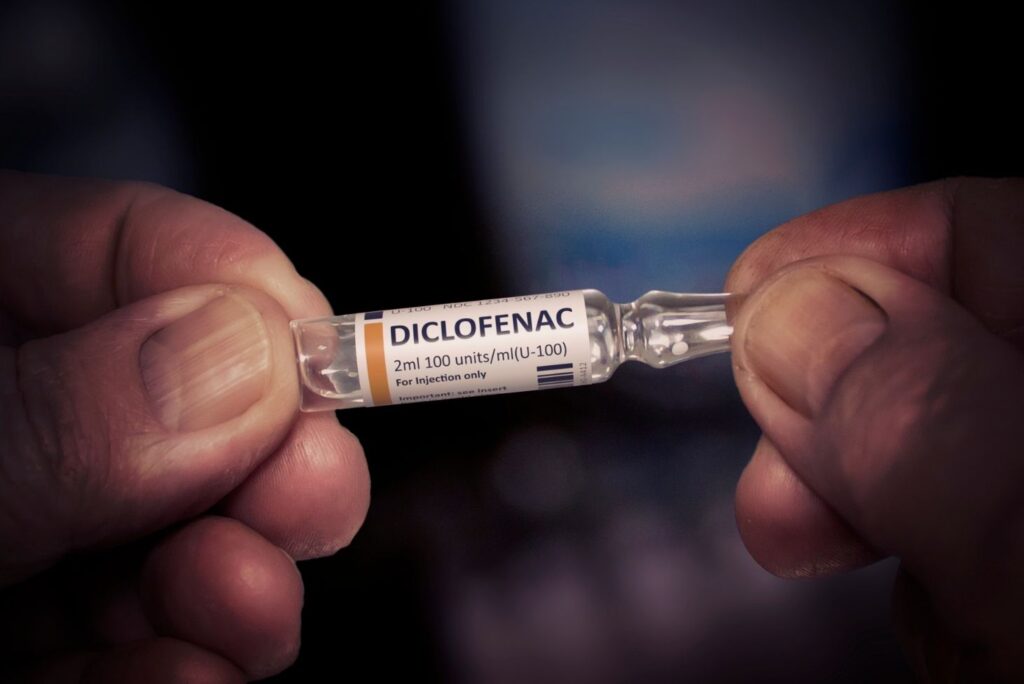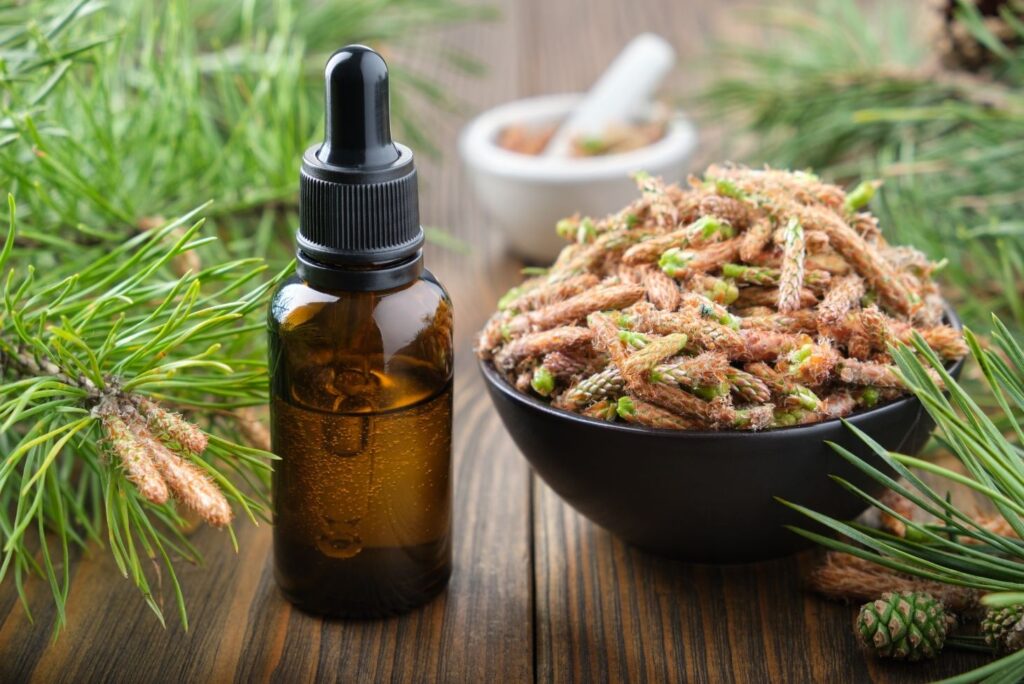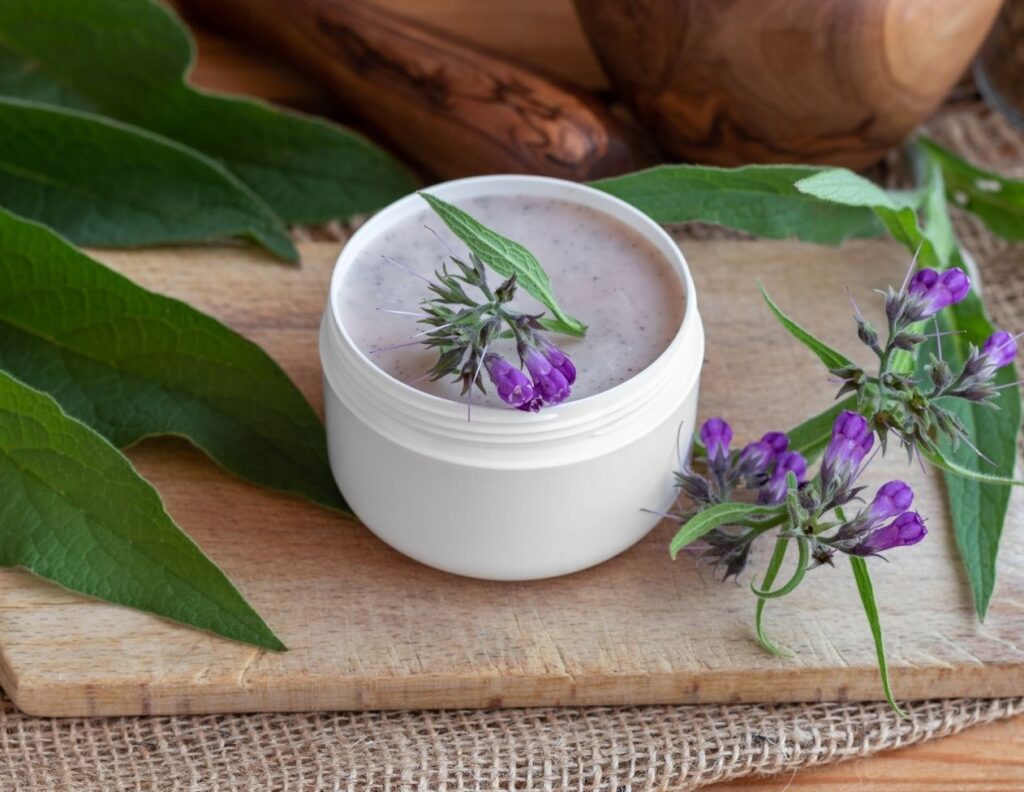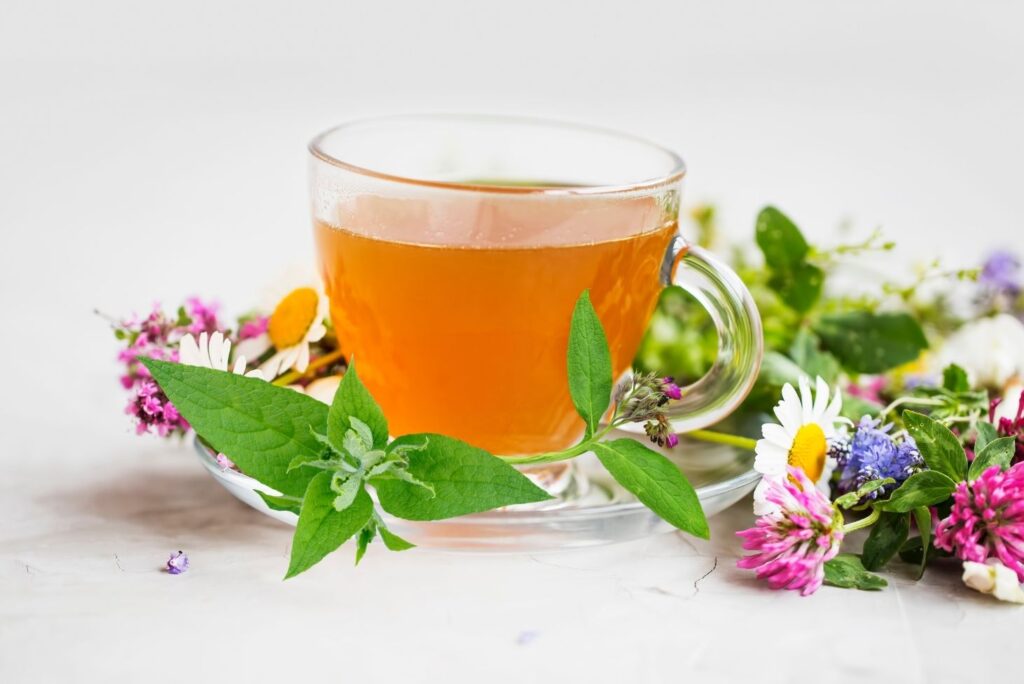Looking for natural alternatives to Diclofenac? Continue reading and find the best natural alternatives to Diclofenac and how you can use them at home.
Diclofenac belongs to the drug group of non-steroidal anti-inflammatory drugs or NSAIDs, which are used to treat pain and inflammation. According to its leaflet, Diclofenac relieves the symptoms of inflammation, such as swelling and pain, blocking the synthesis of a specific type of molecules called prostaglandins, which are responsible for inflammation, pain, and fever. It has no effect on the causes of inflammation or fever. Before we get to the natural alternatives to Diclofenac, let’s see what Diclofenac is used for.

In This Article You Will Find:
What Is Diclofenac Used For?
Diclofenac is used for alleviating:
- Rheumatic joint pain (arthritis)
- Back pain, blocked shoulder, tennis elbow, and other types of joint pain
- Gout pain
- Dislocations, sprains, and other injuries
- Pain and swelling after surgery
- Painful inflammatory gynecological conditions, including menstrual cramps
- Ear, nose, and throat infections
Is Diclofenac Safe? Adverse Effects of Diclofenac
On short-term use and in minimal dosages, Diclofenac can have very low or no adverse events, however, this is rarely the case, given Diclofenac is usually prescribed over longer periods of time. The most severe adverse events of Diclofenac are:
- chest pain
- shortness of breath or weakness
- slurred speech
- swollen legs or ankles
- slightly increased risk of heart attack or stroke
- severe indigestion
- heartburn or stomach pain
- gastritis and ulcers
- liver inflammation
- blood in vomit or black stool
- stomach or bowel bleeding
- severe skin reactions
Now let’s get to the natural alternatives to Diclofenac and how to use them at home.
9 Natural Alternatives to Diclofenac and How to Use
1. Royal Jelly
Royal jelly is rich in minerals (manganese and phosphorus), amino acids (tryptophan and tyrosine), and vitamins (A, D, and E) that stimulate the nourishment of the affected cartilage, ensure the vitality of the supporting tissues and maintain the health of the bones. The daily dose is 1-2 g for 3 weeks, with a 10-day break, after which the treatment can be resumed. You can associate the royal jelly cure with applying a joint pain salve, as the one with propolis and bee venom below. Royal jelly is undoubtedly one of the best natural alternatives to Diclofenac.

2. Gemmotherapy
Gemmotherapy has some of the best natural alternatives to Diclofenac, namely blackcurrant bud extract (Ribes nigrum), mountain pine bud extract (Pinus mugo or Pinus montana), and grape bud extract (Vitis vinifera).
- blackcurrant bud extract is effective in osteoarthritis and in some forms of inflammatory rheumatism (arthritis, polyarthritis);
- mountain pine bud extract has a regenerating action on the osteoarticular system, with anti-inflammatory action on all articular cartilages, due to its pycnogenol content, and is effective in hip osteoarthritis, gonarthrosis, vertebral arthrosis, chronic degenerative rheumatism, and osteoporosis.
- grape bud extract has antirheumatic, anti-inflammatory, analgesic, and immunomodulatory action, being recommended in acute rheumatoid arthritis, degenerative rheumatism, hip osteoarthritis, gonarthrosis, and rheumatoid arthritis.
These extracts can be administered 2 ml three times a day either one, with a little water, or 2-3 ml in a little water once a day, when used in combinations. These are some of the most effective natural alternatives to Diclofenac.

3. Willow Bark Extract
(Salix alba)
Willow bark extract capsules (especially when coupled with rosemary and oregano extracts) act effectively in relieving pain, and fighting fever and inflammation, without the irritating effects on the gastric and intestinal mucosa, from Diclofenac and other NSAIDs. Willow bark extract is the precursor of aspirin with notable results in relieving rheumatic pain due to its natural salicin content and is especially good in rheumatoid arthritis, ankylosing spondylitis, rheumatoid arthritis, osteoarthritis, and rheumatic neuralgia, making it one of the best natural alternatives to Diclofenac.
4. Devil’s Claw
(Harpagophytum procumbens)
A study on 316 patients found that devil’s claw extract can relieve back pain and lumbar pains just as good as a standard dose of Rofecoxib (Vioxx), a COX-2 inhibitor that has since been withdrawn from the market due to increased risk of a heart attack. Is recommended as an anti-inflammatory in arthritis, osteoarthritis, polyarthritis, spondylosis, and hip osteoarthritis. Ideally, is used together with willow bark extract for even more powerful effects. Has better pain-reducing effects than aspirin, making it one of the top natural alternatives to Diclofenac.
Caution is advised in case you are suffering from gastritis, duodenitis, gastric and duodenal ulcers. Devil’s claw is not recommended for people with blood coagulation disorders, on anticoagulants, or with low blood pressure.

5. Curcumin
Turmeric is an excellent source of curcumin, a powerful antioxidant, which is also a natural analgesic, and an inhibitor of the enzyme COX-2. It reduces inflammation by lowering histamine levels and making the adrenal glands produce more cortisone – the body’s natural analgesic. Ten out of ten studies researching the effects of curcumin extract on knee osteoarthritis showed improvement in pain and function from baseline with turmeric therapy and no significant adverse events. Even more, three of these studies comparing turmeric to NSAIDs showed no differences in outcome scores. In other words, turmeric therapy has the same results as NSAIDs but with no adverse reactions.
In acute pain, you can supplement with turmeric capsules containing a standardized curcumin extract with a concentration of 90-95%. Have a little freshly ground black pepper with each capsule, as it improves the absorption of curcumin in the body, or go for curcumin with piperine supplements. Undoubtedly, curcumin with black pepper is one of the best natural alternatives to Diclofenac.
6. Boswellia
(Boswellia serrata)
Frankincense extract, also known as Boswellia is one of the best natural alternatives to Diclofenac, given its natural anti-inflammatory properties, which do not weaken the immune system but are able to reduce pain and inflammation. It is one of the best Ayurvedic remedies for rheumatoid arthritis, due to its boswellic acid content and other terpenoids. Boswellia extract acts in a similar way to non-steroidal anti-rheumatic drugs, but while it reduces inflammation, it does not cause side effects, such as stomach linen irritation or bleeding in the digestive tract, as Diclofenac does.

7. Propolis & Bee Venom
Propolis extract has a strong anti-inflammatory effect similar to diclofenac, being popularly known as “natural aspirin”. Propolis can be used in the treatment of cervical osteoarthritis, as well as an adjunct in rheumatoid arthritis. For this, you can make your own ointment with beeswax, propolis extract, bee venom, and capsicum extract that you can use topically in the treatment of degenerative diseases of the joints, as this combo can reverse the inflammatory processes and have similar effects to Diclofenac. Apply the salve in a thin layer on the sore area, cover with a clean piece of gauze and leave overnight.
Bee venom has long been used in traditional medicine for the treatment of various forms of rheumatism, due to its anti-inflammatory and analgesic properties. The topical application of bee venom salves can help reduce osteoarticular pain and partially restores the mobility of the joints and spine, reducing the need for NSAID drugs such as Diclofenac. Bee venom creams are one of the top natural alternatives to Diclofenac cream.
8. Comfrey Root Extract Cream
(Symphytum officinale)
In a verum-controlled clinical trial versus topical diclofenac, the ankle swelling of patients was decreased by 79.5 % in the comfrey root group compared to 69.4 % in the diclofenac group. This study confirmed that topical application of comfrey extract is non-inferior to diclofenac. Comfrey root extract cream is used topically on the sore, inflamed areas, making it one of the best natural alternatives to Diclofenac for external use.

9. Black Bryony Root Macerate
(Tamus communis)
One of the top natural alternatives to Diclofenac cream is black bryony root salve or macerate. You can easily make this macerate at home with lamp gas. Finely grate a few black bryony roots after you’ve thoroughly washed them and put them in a wide neck jar. Pour over lamp gas, about 3/4, and leave to soak for 8 days. Use this macerate to anoint the painful areas daily. Results usually show after 7-8 days of daily use. If you can’t stand the smell of lamp gas, prepare the macerate with natural strong alcohol (60°), but the best result is when you prepare it with lamp gas.
If you suffer from chronic rheumatic pain, you can wrap the area with a cotton or linen cloth and then a woolen scarf after rubbing the black bryony macerate.

10. Nettle
(Urtica dioica)
Stinging nettle has been traditionally used as a remedy in the treatment of osteoarthritis. That is because it contains many active ingredients with analgesic and anti-inflammatory effects, such as caffeic acid, ferulic acid, and scopoletin. In a German study with 40 patients with osteoarthritis, researchers compared the effect of 200 mg of Diclofenac (Voltaren) to a combination of 50 mg of steamed nettle leaves and 50 milligrams of Diclofenac. In both groups symptoms improved to the same extent.
Experts have concluded that this could be a way to reduce by about 75% the medication prescribed for people with osteoarthritis. More so, this can reduce the risk of gastrointestinal bleeding and other risks associated with Diclofenac. This makes nettle one of the best natural alternatives to Diclofenac. Including stinging nettle in your diet is one of the best natural alternatives to Diclofenac.
Herbal Teas as Natural Alternatives to Diclofenac
The herbal infusions with the strongest anti-inflammatory properties, that can work as natural alternatives to Diclofenac are:
- Horsetail – reduces inflammation and pain, and helps restore cartilage due to its remineralizing properties. 15-20 drops of horsetail tincture in 100 ml of water, three times a day, before main meals.
- Peppermint – You can drink 3-4 cups of peppermint tea by scalding 1 teaspoon (5 g) of dried mint leaves in 1 cup of boiling water for 5 to 10 minutes. To boost its effect, add some chamomile and licorice to the tea. In this way, you will benefit from the healing effects of herbs with analgesic and anti-inflammatory action.
- Common Ivy – used as an anti-inflammatory in paresthesia, sciatica, sacroiliac, and rheumatic myalgias. The daily dose is 2-3 cups of infusion per day, or 10% tincture of which 2-3 teaspoons diluted per day are taken before main meals.
- Herbal Blend – mix 3 tbsp meadowsweet, 5 tbsp stinging nettle, 4 tbsp red clover, 3 tbs horsetail, 2 tbsp sage, 2 tbsp birch leaves, 4 tbsp knotweed, 1 tbsp wormwood. Steep one full tbsp in a cup of how water for 10 minutes and drink 2 cups daily for 3 weeks a month. This herbal tea is recommended especially in ankylosing spondylitis, being one of the best natural alternatives to Diclofenac.

Supplements That Fight Inflammation
- Glucosamine – Glucosamine and chondroitin sulfate alleviate pain and slow the degradation of cartilaginous tissue. According to some studies, the combination of these two complementary components is effective in relieving moderate pain caused by osteoarthritis.
- MSM – the organic sulfur compound is known for its beneficial effects in relieving joint pain and muscle pain.
- NAC – is a powerful detox, with important anti-oxidant and anti-inflammatory properties; can relieve osteoarthritis pain, and potentiate the antiinflammatory effects of drugs.
- SAMe – This substance secreted by the brain alleviates the pain of osteoarthritis, increasing the number of proteoglycans in the blood, that play a major role in the formation of cartilage which ensures its density and oxidation. This substance is as effective as non-steroidal anti-inflammatory drugs such as ibuprofen.
- Selenium with Vitamin E – powerful antioxidant, immunostimulatory and has inflammation-reducing properties. Selenium + vitamin C + vitamin E is the triad with strong antioxidant and anti-inflammatory action, considered ideal for counteracting autoimmune pathologies. The optimal daily dose is 250 mg vitamin E, 250 mcg selenium, and at least 300 mg vitamin C.
- Vitamin C – can help reduce the risk of osteoarthritis and arthritis, protect cells (including those in the joints) and limit tissue damage. Eat more foods rich in vitamin C: citrus fruits, blackcurrants, kiwis, melons, bell peppers, new potatoes, and especially broccoli.
Top Antiinflammatory Foods
- Ginger – Take half a teaspoon of ginger powder or 35 g (about 6 teaspoons) of fresh ginger daily. Ginger can help reduce arthritis pain due to its action on blood circulation, which helps eliminate inflammatory substances from the joints, making it one of the top natural alternatives to Diclofenac.
- Turmeric – contains curcumin, a very powerful antioxidant that protects against the destructive action of free radicals.
- Hot peppers – contain capsaicin, a sticky, resinous, pungent alkaloid that is one of the most effective natural painkillers. You can use a hot pepper tincture or make a hot pepper powder infusion as natural alternatives to Diclofenac.
- Vegetables (beets, carrots, potatoes, green beans, broccoli, celery stalks, parsnips, cabbage, radishes, zucchini, broccoli, Brussels sprouts, red bell peppers, hot peppers, cucumbers, lettuce, leafy greens, chives, pumpkin, non-GMO corn)
- Red and yellow fruits especially (pomegranate, grapes, cherries, pineapple, oranges and orange juice, grapefruit, mandarins, mangoes, papayas, apricots, peaches, nectarines, apples, melons, watermelons, kiwi, plums, etc) – rich in beta-cryptoxanthin;
- Wild cold-water fish (mackerel, trout, sardines, salmon, tuna, and halibut) – fish and fish oil help reduce the concentration of cytokines, the proteins that promote inflammation leading to joint swelling, and pain due to their anti-inflammatory acids (EPA and DPA).
- Grains (millet, buckwheat, oats, green barley juice).
- Nuts and seeds (walnuts, flaxseed, flaxseed oil, olive oil – in small quantities)
- Hydration (spring water, distilled or filtered, birch sap, celery juice)

Foods That Create Inflammation
In addition to the natural alternatives to Diclofenac and the natural antiinflammatory foods, beware of the foods that build up inflammation, as these are the foods you need to avoid or cut out. Meat and meat products build up uric acid in the body, one of the main causes of joint inflammation and pain. These foods are:
- processed sugar
- processed meat
- milk and dairy
- red meat
- hamburgers
- steaks
- coffee (including decaf)
- highly refined foods
- junk foods
Easy but regular exercise (even daily walks) a preponderantly vegetarian/vegan diet, and a positive mindset are other natural ways to keep your joints in shape and prevent inflammation. Now you know what are the top natural alternatives to Diclofenac, and how to use them to alleviate joint pain. If you enjoyed this article, share it so more people can use this information. Stay healthy, naturally!
Share on Pinterest ❤️

